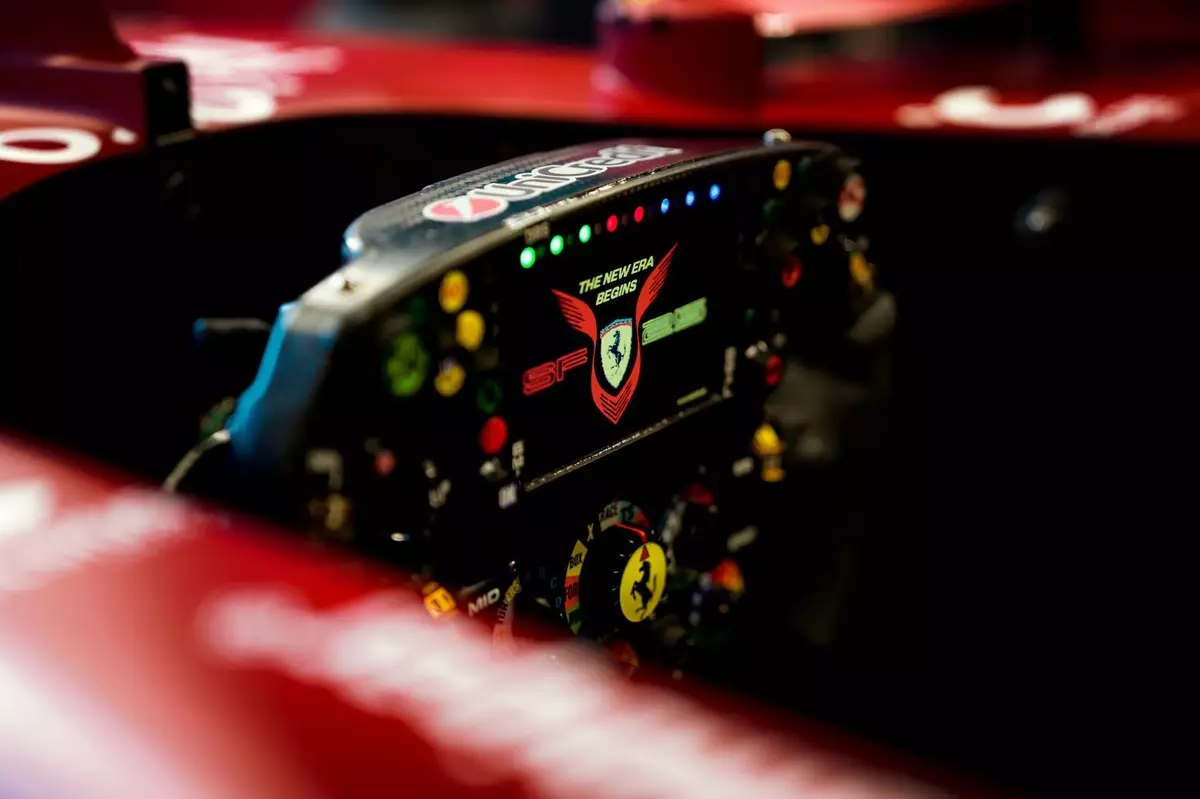As Lewis Hamilton embarks on a fresh adventure with Ferrari in the 2025 Formula 1 season, early signs indicate a promising trajectory. While he has faced challenges in executing flawless performances in Australia and China, the British driver’s triumph in the sprint race in Shanghai, where he claimed both pole position and victory, underscores that he is not just another driver in the Scuderia. Instead, he is a formidable force who still possesses the potential to dominate, given the right conditions.
Hamilton’s transition from the traditional Mercedes engineering platform to a distinctly different Ferrari philosophy represents more than just a change of scenery; it is a transformational journey that requires both skill and adaptability. Following over a decade at Mercedes, Hamilton has built an innate muscle memory that dictates his driving style and preferences. This transition is no small feat, especially when dealing with the microscopic margins that exist at the front of the grid. Even minute tweaks in any component or setting can dramatically shape race outcomes.
Ferrari’s Tailored Touch
Acknowledging Hamilton’s extensive experience, Ferrari has not hesitated to reassess and adapt their vehicle to capitalize on his strengths. From the very outset, their commitment has been evident; they incorporated a personalized welcome message on Hamilton’s steering wheel during his debut. But the modifications extend way beyond mere aesthetics. The Scuderia has revamped the clutch and gear lever within the steering wheel, enhancing ergonomics to suit Hamilton’s unique preferences.
One of the most notable aspects of this customization is the software reprogramming that Ferrari has executed. Traditionally, Ferrari’s management of vehicle performance relied on configurations tailored for their drivers, but in Hamilton’s case, they seem to have taken it a step further. Rather than relying solely on frameworks used by drivers such as Charles Leclerc, they are aligning settings with Hamilton’s accustomed environment at Mercedes, allowing him to extract maximum performance right from the outset.
Information Overload or Insightful Guidance?
The steering wheel modification does not merely involve physical enhancements; it also encapsulates a significant evolution in data representation. Unlike Leclerc’s more simplified interface, Hamilton’s screen now brims with vital metrics that enhance his situational awareness during races. For instance, Hamilton’s steering wheel provides feedback on the state of charge (SOC) of the battery pack along with engine mappings like never before, offering him the detailed insights he long relied on at Mercedes.
This important decision to separately display engine and hybrid management details embodies Ferrari’s recognition of Hamilton’s need for exhaustive information at his fingertips. While some may argue that excessive data presentation during a race can be overwhelming, for a driver of Hamilton’s caliber, this approach could be pivotal. Not only does it cater to his analytical prowess but it extends his edge by ensuring that he is in full control at critical moments.
Different Philosophies in Action
Comparing how Ferrari and Mercedes operate reveals profound contrasts in their methodologies. While the Brackley team streamlined numerous functionalities into fewer gauges and controls, Ferrari has taken the opposite approach by offering more direct access points on Hamilton’s steering wheel. For Hamilton, this translates into having greater control over essential functions, thus allowing quick adjustments mid-race without losing focus or rhythm.
Each switch on Hamilton’s steering wheel is meticulously arranged to echo his familiar driving setup from Mercedes, where functionality was prioritized for quick adjustments. Ferrari’s adaptability in this regard demonstrates a willingness to not only embrace change but also learn from Hamilton’s historical success.
Beyond just driving feel, Hamilton’s amended setup includes a host of advanced options for monitoring tire performance and fuel consumption. As the sport increasingly evolves, maintaining a competitive edge often means adapting to new technologies, and Ferrari’s decisions reflect an eagerness to innovate by harnessing a depth of data that caters specifically to Hamilton’s competitive instincts.
The Quest for Familiarity
Though the array of changes designed for Hamilton might seem insignificant on the surface, their ability to foster familiarity could bear substantial advantages. By creating an environment in which Hamilton can quickly feel comfortable with the Ferrari SF-25, the Scuderia is cleverly positioning itself to unleash the veteran’s formidable capabilities. The reliability of a driver’s confidence in their car is as crucial as the machine’s inherent performance.
Hamilton’s desire for familiarity — mirrored in the setup and customization of his steering wheel — speaks volumes about what it takes to convert talent into triumph on the racetrack. Ferrari’s approach, therefore, not only acknowledges Hamilton’s legendary status but also emphasizes the significance of catering to elite performance through individualistic configurations. As the season progresses, one thing remains clear: Hamilton’s adaptation to the SF-25, underpinned by thoughtful personalization, may just provide the magic needed to ignite Ferrari back into championship contention.


Leave a Reply